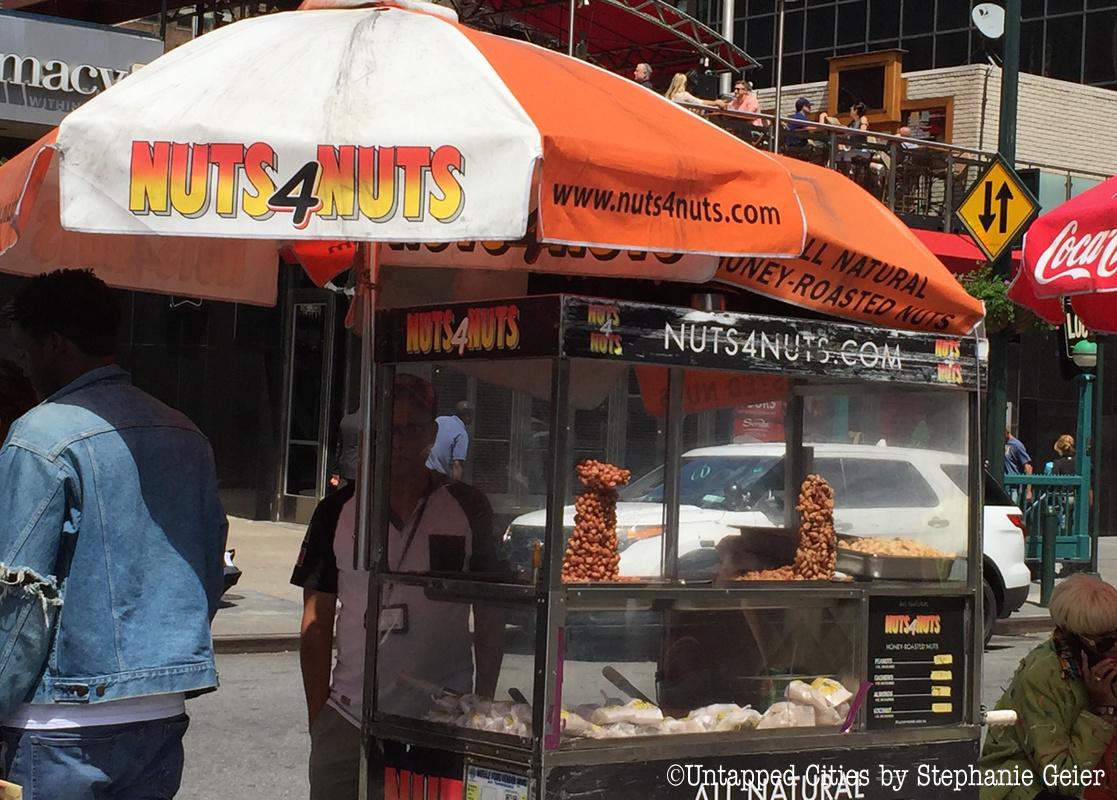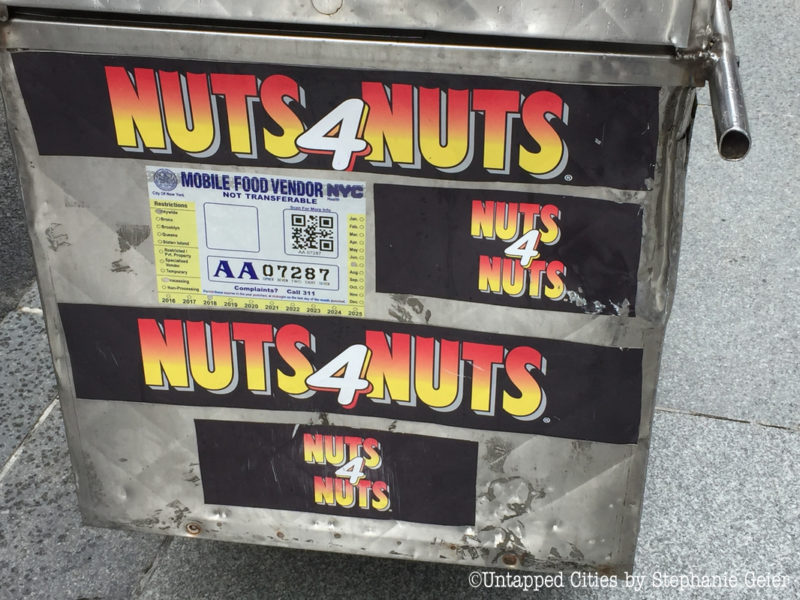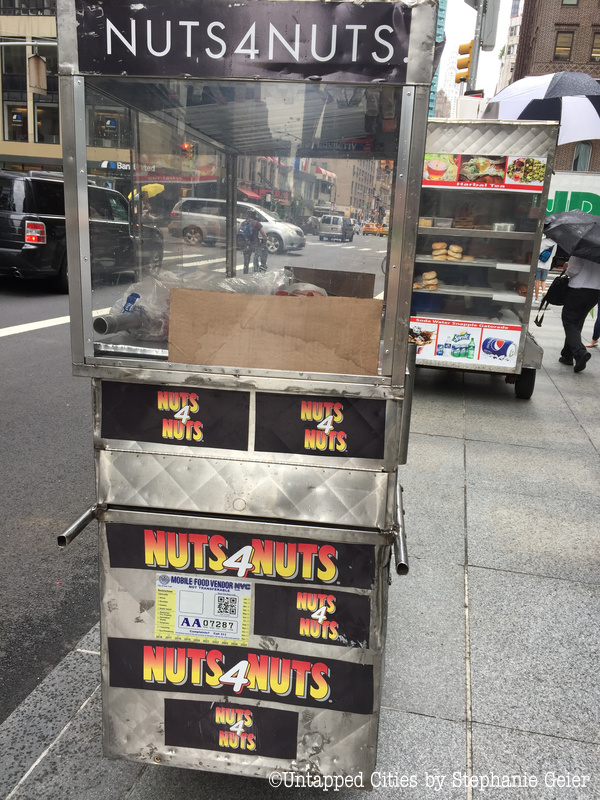Nuts4Nuts—you’ve seen them, ate them, or at least smelled them while walking down the city streets. A New York City staple, Nuts4Nuts carts are especially popular in Manhattan, enticing pedestrians with their sweet, nutty smell and sparking temptation in taste buds—especially tourists who are new to the carts. But what many don’t know is the entrepreneurial story behind Nuts4Nuts, which has its roots outside of the country.
The official story (the one on the Nuts4Nuts website) goes like this: The honey roasted nuts came to New York City from Buenos Aires, Argentina, where they were called “Mani Garripanda.” And if we want to go back even further, Nuts4Nuts further states that the recipe dates from the 1920s, when the French brought honey-roasted pralines to Argentinians, who then started “experimenting with peanuts.”
The New York Times adds some more context, explaining that the Argentines “trace the origins” of the nut vendors to an Argentine man named Jorge Aguirre, who started selling them in the mid-1980s and “gradually enlisted” Argentine men to help him. One of them was Alejandro Rad, who began selling honey-roasted nuts on his own when he came to the U.S. in 1989. Over time, he “began with one pushcart and grew steadily.” As more Argentinian immigrants arrived here, they naturally sought to find work as Nuts4Nuts vendors.
New York City’s first roasted nut cart debuted in 1993, then branded“Nuts About Nuts” by Rad. Then in 1998, the name was changed to “Nuts4Nuts.” Today, Rad co-owns United Snacks, Inc., which supplies almost 100 pushcarts around New York City.
However, there is a competing Chilean version of the story, according to a 2002 article by The New York Times. They reported on how the rivalry between Chile and Argentina was causing tension between Argentinian and Chilean Nuts4Nuts vendors who had neighboring carts on West 46th street.
While the Argentinians unwaveringly stuck behind their version of the story, Chilean vendors maintained another: Nuts4Nuts began when a poor Chilean immigrant vendor named Luis Martinez (known as “El Conejo”) arrived in New York City and sold nuts from a cart to scrape some money together. He eventually earned enough to buy many carts and became wealthy. According to this version, Chileans arriving in the U.S. then sought Nuts4Nuts carts for work. El Conejo was later interviewed on TV, where he was largely portrayed as one of the founders of New York City’s roasted nut business.
Additionally, the Argentinians even had their own version of the Chilean story: In 1991, Aguirre saw El Conejo crying on the street because he was unemployed. So Aguirre gave him work as a nut vendor, “until El Conejo was ready to strike out on his own.”
The conflicting stories are likely rooted in the historic rivalry between Chile and Argentina, which in some ways, was brought over to the U.S. However, while the vendors on West 46th did have their squabbles, the similarity of their work “has eased the rivalry for some.”
Regardless of their history, the success of Nuts4Nuts shows how immigrants help New York City thrive. What began as one man selling peanuts has thrived into a full-fledged business where vendors are trained and well-equipped to prepare the nuts. If you were to peer into a Nuts4Nuts cart or watch a vendor make them, you’d see this. The carts’ copper bowls allow for the “even and rapid distribution of heat required to get the sugar to envelop the nut with a crunchy, sweet exterior.” The nuts are simmered in hot water, sugar, and honey, with the sweet, crunchy crust forming as they cool.
Today, vendors boast a variety of nuts—usually peanuts, cashews, almonds, and pecans. Some also sell honey-roasted coconut chunks, which are apparently incredible, and it looks like you can even buy Nuts4Nuts gift cards!
Next, check out Vintage Photos: 19th & Early 20th Century NYC Street Food Vendors and What’s It Take to Become a Food Truck Vendor in NYC?








